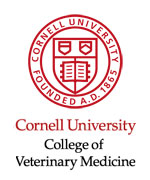"Diseases of Importance at the
Wildlife/Livestock
Interface in Kenya"
Elizabeth Wambwa
The rangelands of Kenya occupy 74% of the country’s
land area and are largely inhabited by nomadic or transhumant
pastoralists who comprise less than 15% of the total population.
This extensive production system allows a greater interface
between domestic and wild animals. This interface also occurs
on large scale private or community ranches, and with communities
that border the protected areas (national parks and game
reserves) around the country. With livestock and wildlife
sharing the same ecosystems, there is exchange of several
diseases. The resurgence of some livestock and wildlife diseases
in Kenya that were previously controlled is of serious concern
and can be attributed to several factors. The uncontrolled
or illegal movements of livestock by pastoralists within
the country and across national borders in search of grazing,
markets or following cattle rustling is a major factor in
the spread of diseases. Seasonal wildlife movements result
in constant interactions with livestock and also increase
the possibility of occurrence of transboundary diseases.
The most prevalent and economically important diseases in
Kenya include those caused by viruses such as rinderpest,
Rift Valley fever, foot and mouth disease, African swine
fever, malignant catarrhal fever and rabies (Karstad, 1986;
Mushi, 1986; Rossiter, 1986). Bacterial diseases include
anthrax, brucellosis and contagious bovine pleuropneumonia
(Karstad, 1986). Protozoal diseases such as trypanosomiasis
and theileriosis (Grootenhuis, 1986) and numerous ectoparasites
and helminths are also prevalent. The presence of some important
transboundary diseases has greatly reduced Kenya’s
export of wildlife, livestock and their products to lucrative
international markets. This is due to stringent requirements
in sanitary standards for international trade in animals
and animal products established by the World Organisation
for Animal Health (OIE), that are a prerequisite for exporting
products.
New and innovative approaches to disease control are needed,
as the human-livestock-wildlife situation in Africa is highly
dynamic and current knowledge and veterinary skills should
be applied at the interface. Government policy needs to focus
strongly on improvement of disease control and marketing
of livestock, wildlife and their products. There is need
for regional integration within East Africa to allow for
free trade in animals and animal products.
This paper briefly describes the wildlife-livestock interface
in Kenya with emphasis on the important diseases at this
interface. It suggests measures to enhance disease control
and improve trade in wildlife, livestock and their products.
|
|











